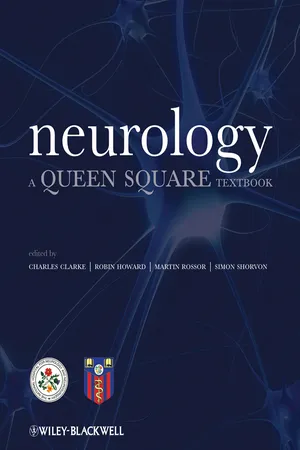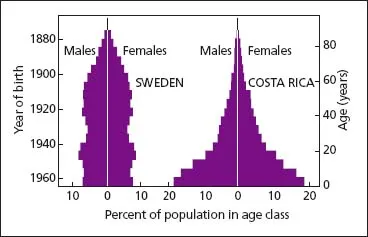
Neurology
A Queen Square Textbook
- English
- ePUB (mobile friendly)
- Available on iOS & Android
Neurology
A Queen Square Textbook
About this book
Neurology: A Queen Square Textbook is a remarkable fusion of modern neuroscience with traditional neurology that will inform and intrigue trainee and experienced neurologists alike.
Modern neuroscience has penetrated exciting and diverse frontiers into the causes, diagnosis, and treatment of neurological disease. Clinical neurology, whilst greatly enhanced by dramatic advances in molecular biology, genetics, neurochemistry and physiology, remains deeply rooted in practical traditions: the history from the patient and the elicitation of physical signs.
Neurologists, neuroscientists and neurosurgeons working at Queen Square, and advised by an international editorial team, have combined their expertise and experience to produce this unique text. The synthesis of clinical neurology with translational research provides a fresh perspective which is
- Practical
- Multidisciplinary
- Translational
- Integrative
The blend of new science and proven practice underpins this creative approach towards investigating and improving the care of patients suffering from neurological diseases.
About Queen Square
The world-renowned National Hospital for Neurology & Neurosurgery and UCL Institute of Neurology, based in Queen Square, London, have an international reputation for training, research and patient care. Research at both institutions leads developments in translational medicine that are transforming the treatment of neurological disease.
Frequently asked questions
- Essential is ideal for learners and professionals who enjoy exploring a wide range of subjects. Access the Essential Library with 800,000+ trusted titles and best-sellers across business, personal growth, and the humanities. Includes unlimited reading time and Standard Read Aloud voice.
- Complete: Perfect for advanced learners and researchers needing full, unrestricted access. Unlock 1.4M+ books across hundreds of subjects, including academic and specialized titles. The Complete Plan also includes advanced features like Premium Read Aloud and Research Assistant.
Please note we cannot support devices running on iOS 13 and Android 7 or earlier. Learn more about using the app.
Information

Table of contents
- Cover
- Series
- Title Page
- Copyright
- Editorial Team
- Preface
- Acknowledgements
- 1: Neurology Worldwide: the Burden of Neurological Disease
- 2: Nervous System Structure and Function
- 3: The Language of Neurology: Symptoms, Signs and Basic Investigations
- 4: Stroke and Cerebrovascular Diseases
- 5: Movement Disorders
- 6: Epilepsy and Related Disorders
- 7: Cognitive Impairment and Dementia
- 8: Infection in the Nervous System
- 9: Nerve and Muscle Disease
- 10: Multiple Sclerosis and Demyelinating Diseases
- 11: Headache
- 12: Cranial Nerve Disorders
- 13: Neuro-Ophthalmology
- 14: Neuro-Otology: Problems of Dizziness, Balance and Hearing
- 15: Spinal Cord Disorders
- 16: Cerebellar Ataxias and Related Conditions
- 17: Restorative and Rehabilitation Neurology
- 18: Toxic, Metabolic and Physical Insults to the Nervous System and Inborn Errors of Metabolism
- 19: Disorders of Consciousness, Intensive Care Neurology and Sleep
- 20: Neuro-Oncology
- 21: Psychiatry and Neurology
- 22: Pain
- 23: Autonomic Dysfunction
- 24: Uro-Neurology
- 25: Systemic Conditions and Neurology
- The colour plate section can be found facing
- Index